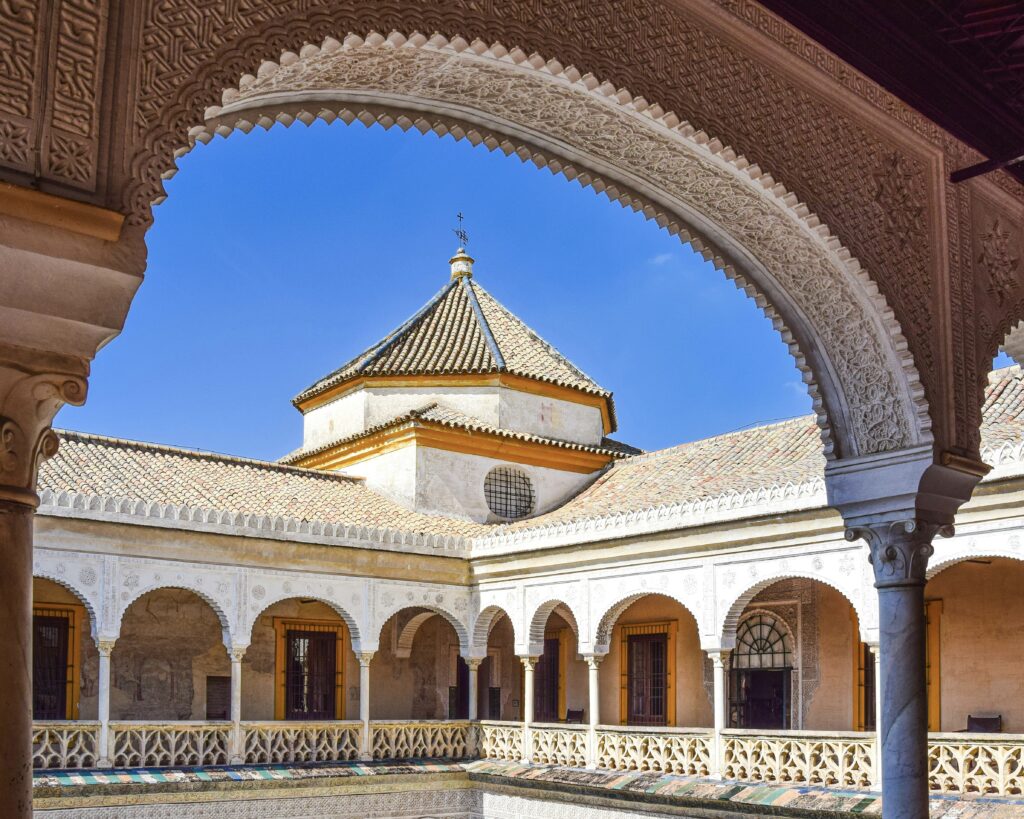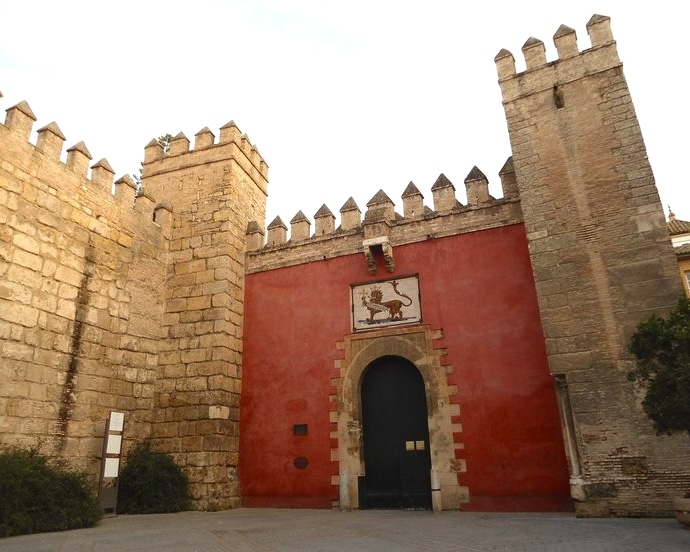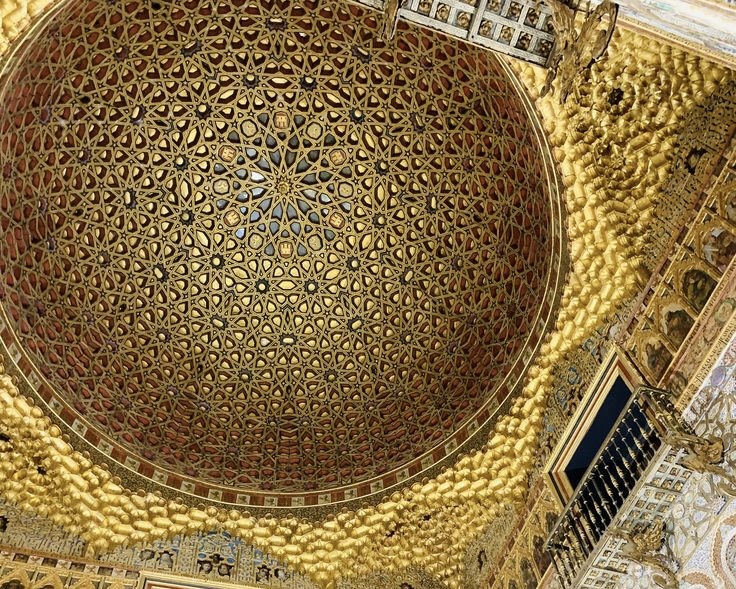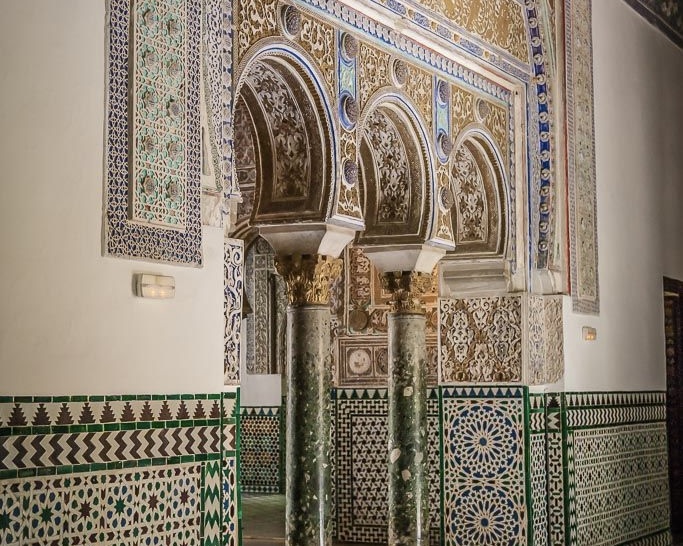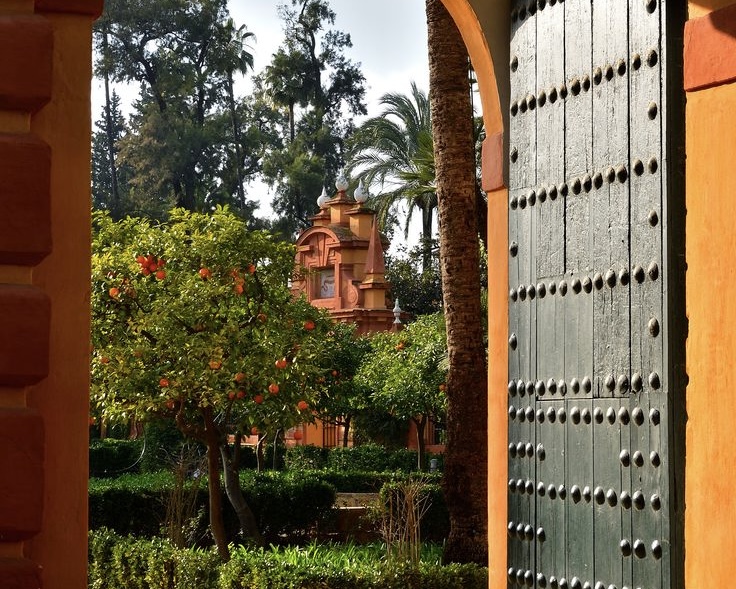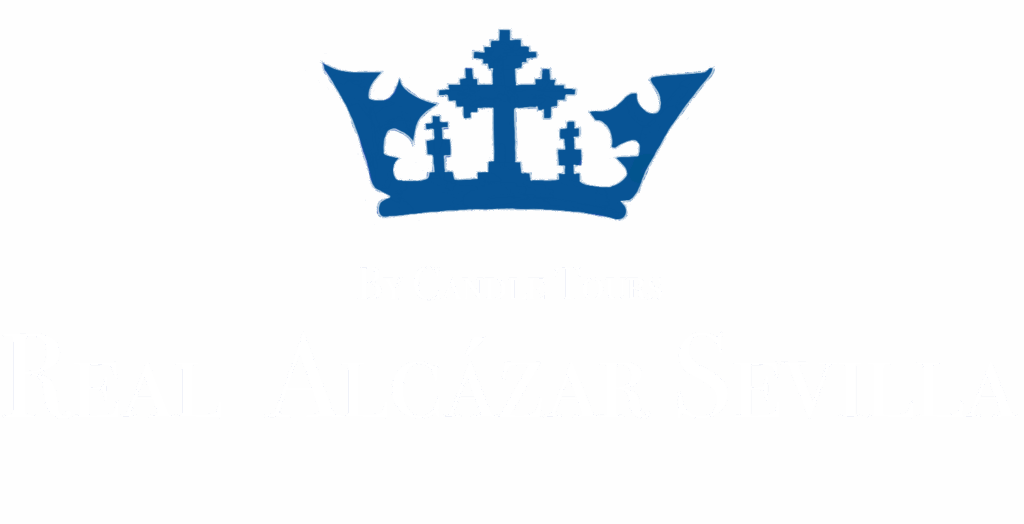ALCAZAR OF SEVILLE OFFICIAL TICKETS
Discover the history of Seville with direct access
- Skip the line
- Duration 3 hours
- Audio guide; ENG, SPA, FRA, DEU, POR, ITA, RUS, JPN, ZHO
- Guided Tour
- Minimum age +18
- The voucher is accepted on the mobile
- Wheelchair accessible
- Discount for children under 18 years old
Welcome to the Alcazar of Seville
A Timeless Icon of History and Architectural Grandeur
International prestige
Discover one of the legendary Seven Wonders of the World!
+ 12 million visitors per year
Enjoy a unique Royal House in the world
The Alcázar of Seville is a palace complex with over a thousand years of history. Its rooms are a testament to the city’s history, reflecting the influence of the Taifa kings, the Almohad caliphate, and the Castilian transformation. Historical figures such as al-Mutamid, Ferdinand III, Peter I, Isabella I of Castile, and Charles V passed through its halls.
Although altered over time, a large part of its walls and palaces are preserved, including the walls of the Patio de Banderas, the Palacio del Yeso, and the Patio del Crucero, which belong to the Islamic period. From the 13th century, the Castilians adapted the Alcázar, building the Gothic Palace and, later, the Mudéjar Palace, which is considered the heart of the current Alcázar.
The Alcázar’s gardens are also an essential part, reflecting different styles such as Italian, French, and English, and bearing witness to the splendor of Seville since the Renaissance.
The Visitor Hours vary depending on the winter and summer seasons.
Winter Hours: From October 1 to March 31, from 9:30 a.m. to 5:00 p.m.
Summer Hours: From April 1 to September 30, from 9:30 a.m. to 7:00 p.m.
Closed on 25 December 2025 and 1 and 6 January 2026
General Rules and Dress Code
Identification: It is mandatory to carry your ID card or passport on the day of your visit.
Food and Drink: No food or beverages are allowed, with the exception of water for babies.
Dress Code: Visitors must dress appropriately due to the monument’s historical importance. It is recommended to avoid sleeveless shirts, shorts, or swimsuits.
Restrictions and Prohibitions
Pets: Pets are not allowed, with the exception of guide dogs.
Barefoot access: Entering the Alcázar barefoot is not permitted.
Additional Considerations
Gardens: The Alcázar gardens may be closed without prior notice due to weather or security conditions.
The Royal Alcázar of Seville is the oldest royal palace in Europe still in use, declared a World Heritage Site by UNESCO in 1987. The complex has an area of 7 hectares of gardens and 14,000 m² of buildings, although during the Almohad period it was almost 5 hectares larger.
Lion´s Gate
The Lion’s Gate, also known as the “Puerta de la Montería,” is the main entrance to the Royal Alcázar. The name “Montería” comes from the “Patio de la Montería” it leads to. Its current name is due to a 1892 tile panel made of Triana ceramics, which depicts a lion with a shield and the Latin inscription “Ad Utrumque” (Prepared for either).
Plaster Courtyard
The Plaster Patio is one of the oldest garden spaces in the palace, dating back to the 12th century and of Almohad origin. It is connected to the Lion’s Patio through the Hall of Justice. This patio has a rectangular layout with a water channel connecting two small pools, a typical design of Andalusian gardens. It stands out for its eastern wall, which preserves a significant decoration of carved plaster, a rare and valuable example of Almohad architecture.
House of Trade
Queen Isabella I of Castile ordered its construction in 1503 to store and control products from the New World. Currently, it is limited to the Hall of Audiences and the Admiral’s Room.
King Peter´s Palace
Built by King Peter I in 1364, this palace is a prime example of Andalusian Mudéjar architecture, with Muslim-style constructions but of Christian origin. The Catholic Monarchs, Emperor Charles V, and Philip II also carried out expansions and transformations in this palace.
Courtyard of the Maidens
This courtyard is part of King Peter I’s Mudéjar Palace. In 2002, archaeological investigations uncovered the 14th-century medieval garden that the king had commissioned, which had been covered by Renaissance paving. After a public debate, it was decided to completely restore the garden, which was considered the most important restoration operation in the Alcázar at the time. The restoration was completed in 2005.
Royal High Quarters
The Royal High Quarters are located on the upper floor of Peter I’s Palace. These quarters, which have been the residence of Spanish monarchs, including the Catholic Monarchs and the current kings, contain rooms such as the Official Hall of Audiences, the Bedroom of King Peter I, and the Mirador of the Catholic Monarchs.
Gothic Palace
This palace, also known as the “Palacio del Caracol,” was built by King Alfonso X in the 13th century. It is the southernmost civil Gothic building in Europe. The choice of the Gothic style symbolized the triumph of Christianity, in contrast to the earlier Islamic constructions.
Gardens
The Alcázar’s gardens, which today cover 7 hectares, did not exist as such until the 16th century. At the end of that century, they were adorned with Mannerist gardening. The creation of the Grotto Gallery (“Galería de Grutesco”) and the gardens of the Dance, Troy, Galleys, Flowers, Rustic, Prince, and Ladies reflect this style. The replacement of the vegetable gardens with ornamental gardens was completed in the second half of the 20th century. Today, the gardens have more than 5,000 plants of over 200 different species, thanks to the good climate and the abundant water from three wells.
The filming of “Game of Thrones” at the Royal Alcázar of Seville was for the fifth season of the series, which premiered in 2015. The scenes filmed at the Alcázar, which represented the kingdom of Dorne, appear in the episodes of that season.
To be more precise, the main scenes can be seen in episode 6 of season 5, titled “Unbowed, Unbent, Unbroken.”
Some of the specific Alcázar locations that were used include:
Charles V’s Pavilion: Used for the scene where Myrcella Baratheon and Trystane Martell kiss.
Courtyard of the Maidens: Appears in the characters’ walking scenes and is a central location in Dorne.
Baths of María de Padilla: A key location where Ellaria Sand and the “Sand Snakes” conspire for the rebellion.
Hall of Ambassadors: Used for the scene where Jaime Lannister negotiates the return of his daughter with Doran Martell.
Gallery of Grotesques and the Mercury Pond: Places where characters are seen observing and where important scenes take place.
The Baths of Doña María de Padilla, located in the Royal Alcázar of Seville, are not a bathing area as we understand it today, but rather a majestic underground cistern. This space, which dates back to the 12th century, is part of the Almohad architecture and is located beneath the Patio del Crucero, originally serving as a water deposit. Throughout history, this place has stood out for its ability to remain cool, with a temperature that can be up to 15 °C lower than the outside, which made it useful as a storage area in past eras.
Despite its original function, the name we know today comes from a popular legend that connects it to María de Padilla, the mistress of King Peter I. Although there is no historical evidence confirming that she used this place for bathing, the association with this figure has given it a mystical quality. Its unique atmosphere, created by the natural light that filters through the arches and reflects on the water, has captured the imagination of many, making it one of the most visited and photographed spots in the palace. Its fame has been increased by its appearance in the series “Game of Thrones”, where it was used to represent a key location in the kingdom of Dorne, cementing its place in popular culture.
The provided document states that restorations at the Royal Alcázar of Seville have been a continuous process throughout its history. Beginning in 1997, the Real Alcázar Board of Trustees started a series of archaeological studies and investigations to gain a new perspective on the monument. These efforts culminated in the summer of 2002 with the discovery of the 14th-century medieval garden in the Courtyard of the Maidens. Although the garden’s existence was documented, its state of preservation was unknown.
The discovery led to a public debate about whether to restore the medieval garden or maintain the courtyard’s appearance with the Renaissance paving that covered it. The majority of people and institutions supported the full restoration of the medieval garden, an operation considered the most significant of its time at the Alcázar. The restoration process concluded in the spring of 2005 and revealed a variety of pre-existing Islamic structures.

